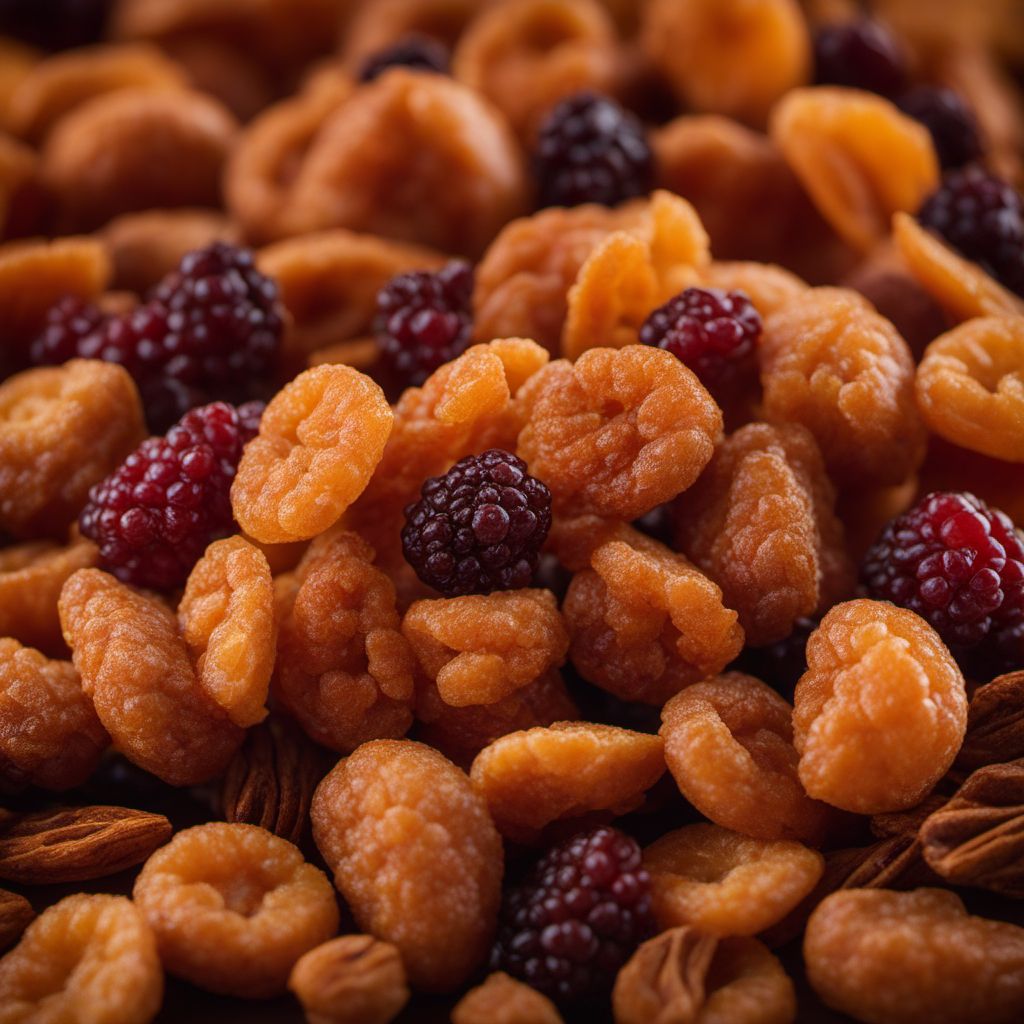
Ingredient
Dried fruit
Nature's Sweet Treasure: Preserved Fruits Packed with Flavor
Dried fruit is a versatile and nutritious ingredient that offers a burst of natural sweetness and intense flavor. It is made by removing the water content from fresh fruits, either through sun-drying or using specialized dehydrators. The drying process enhances the natural sugars in the fruit, resulting in a concentrated and chewy texture. Dried fruit comes in a variety of types, including raisins, apricots, dates, figs, and more, each with its own unique taste and texture.
Origins and history
The practice of drying fruits dates back thousands of years and was initially used as a method of preservation. Dried fruit was highly valued for its long shelf life and ability to provide essential nutrients during times of scarcity. Throughout history, dried fruit has been a staple in many cultures and cuisines, from the Middle East to Asia and beyond. Today, dried fruit is enjoyed worldwide as a healthy snack, baking ingredient, or addition to both sweet and savory dishes.
Nutritional information
Dried fruit is a concentrated source of natural sugars, fiber, and various vitamins and minerals, depending on the type of fruit. It provides a quick energy boost and can be a healthier alternative to processed sweets. However, it is important to consume dried fruit in moderation due to its high sugar content.
Allergens
May contain sulfites, which can cause allergic reactions in some individuals. Additionally, some dried fruits, such as raisins, may be processed with vegetable oils, which can be a concern for those with specific dietary restrictions or preferences.
How to select
When selecting dried fruit, look for plump and moist pieces that are free from mold or signs of spoilage. Avoid dried fruit that appears overly dry or has a hard texture, as this may indicate poor quality or age. Opt for organic or unsweetened varieties whenever possible to avoid added sugars or preservatives.
Storage recommendations
To maintain the freshness and quality of dried fruit, store it in a cool, dry place in airtight containers or resealable bags. Avoid exposure to moisture or direct sunlight, as this can cause the fruit to spoil or lose its flavor. Proper storage will help extend the shelf life of dried fruit.
How to produce
Dried fruit can be produced at home by using a food dehydrator or by sun-drying the fruit. Simply slice the fruit into thin pieces and arrange them on a drying rack or dehydrator tray. Allow the fruit to dry at a low temperature until it reaches the desired texture. Homemade dried fruit can be stored in airtight containers for several months.
Preparation tips
Dried fruit can be enjoyed as a standalone snack or used in a variety of culinary applications. It can be added to trail mixes, granola bars, or baked goods for a natural sweetness and chewy texture. Dried fruit can also be rehydrated and used in savory dishes, such as stews or tagines, to add a touch of sweetness and depth of flavor.
Culinary uses
Dried fruit is commonly used in baking, particularly in recipes for cookies, cakes, bread, and granola. It is also a popular addition to breakfast cereals, yogurt, and smoothies. Dried fruit is a staple in many Middle Eastern and Mediterranean cuisines, where it is used in both sweet and savory dishes.
Availability
Dried fruit is widely available in supermarkets, grocery stores, and specialty food shops around the world. It can also be purchased online from various retailers. The availability of specific types of dried fruit may vary depending on the region and season.
More ingredients from this category » Browse all
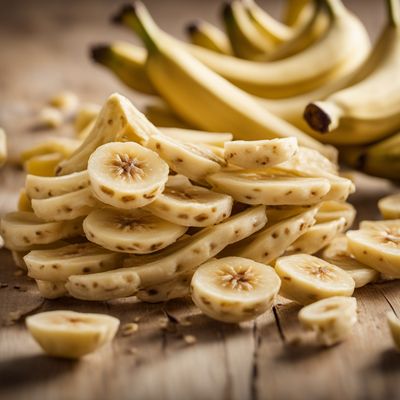
Dried bananas
Nature's Sweet and Chewy Delight: Dried Bananas

Dried figs
Nature's Sweet Gems: Dried Figs
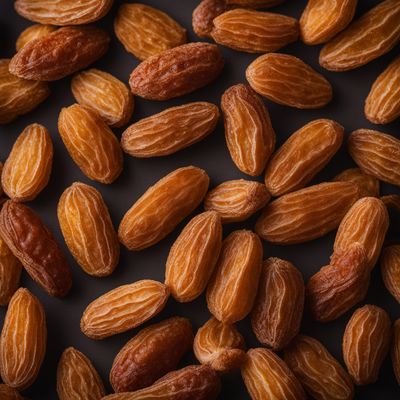
Dried dates
Nature's Sweet Gems

Dried pears
The Sweet Essence of Preserved Pears

Dried apricots
The Golden Gems: Unveiling the Delights of Dried Apricots

Chocolate coated dried fruit
Decadent Delights: Chocolate Coated Dried Fruit
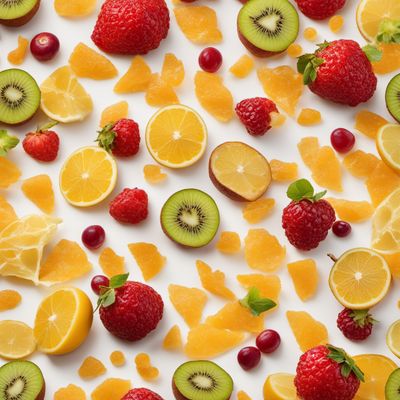
Fruit chips
Crispy Delights: Fruit Chips

Mixed dried fruits
Nature's Sweet Medley: Exploring the World of Mixed Dried Fruits

Dried apples
The Sweet Essence of Sun-Dried Apples

Dried prunes
Nature's Sweet and Tangy Gems

Dried mangoes
The Sweet and Tangy Delight

Dried vine fruits (raisins etc.)
Nature's Sweet Gems
Recipes using Dried fruit » Browse all

Asian-inspired Tomato Beef Stir-Fry
Tangy Tomato Beef Stir-Fry with an Asian Twist

Winter Melon Soup with Shrimp and Tofu
Savory Delight: Winter Melon Soup Infused with Shrimp and Tofu

Steamed Chicken Rice (Nasi Tim Ayam)
Indonesian Delight: Fragrant Steamed Chicken Rice

Chinese-style Zucchini Pancakes
Imperial Zucchini Delights: A Regal Twist on Chinese Pancakes

Malaysian Chinese Style Pheasant Pâté
Savory Fusion: Malaysian Chinese Pheasant Pâté

Honduran-style Yam Wun Sen
Savory Yam Noodle Stir-Fry with a Honduran Twist
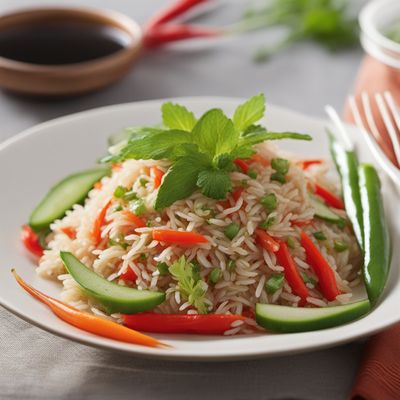
Cantonese-style Rice Salad
Crispy Rice Medley: A Cantonese Twist on a Classic Italian Salad

Luganega-inspired Kimchi Sausage Stew
Savory Kimchi Sausage Stew with a Lombardian Twist
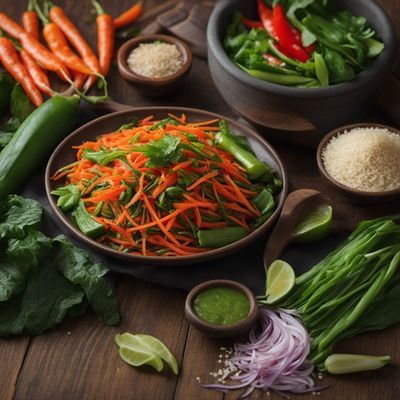
Mongolian-Inspired Callaloo Salad
Savory Mongolian Greens Salad with a Caribbean Twist

Korean Chinese Style Vegetable Kadai
Spicy and Flavorful Korean Chinese Vegetable Stir-Fry

Spicy Korean Cold Noodles
Fiery Noodles of Seoul

Homemade Steamed Dumplings
Delicious Steamed Dumplings: A Taste of Authentic Chinese Cuisine